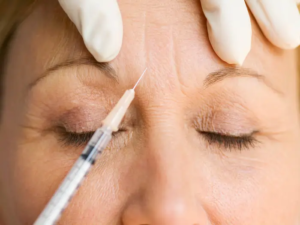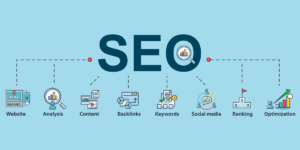The grease trap (or interceptor) allows wastewater to flow into the device, slowing it down enough so that fats, oils, and grease can cool and separate from the water. The lighter grease rises to the top, solids settle in the middle, and clean water flows through and out of your establishment and into the city sewer system.

Grease Trap Perth is a specialized drainage system within sink runs that diverts fats, oils, and grease (FOG) from sanitary sewer lines. They are designed to decrease the amount of FOG that enters and contaminates municipal sewer system infrastructure, which ultimately prevents costly blockages and wastewater spills in public waterways.
Local health and environmental agencies have strict regulations regarding the proper disposal of FOG. Non-compliance can result in financial penalties, re-inspection fees, and operational shutdowns. In addition, a single emergency call for a clogged grease trap in peak summer can cost significantly more than a full season of scheduled cleaning.
The most obvious symptom of a clogged grease trap is a backup of cooking equipment and kitchen wastewater in drains, which causes slow drainage, sanitation issues, and food waste accumulation. Foul odors are another common sign, which is usually caused by the decomposition of trapped sludge.
A clogged grease trap is not just a plumbing problem, but also a safety issue that can lead to injuries and property damage. The resulting flood of hot fatty acids can burn skin and other soft tissue, and cause a build-up of flammable carbon monoxide, which may result in a fire or explosion.
If the grease trap’s crossover line that connects the solids and liquids compartments becomes clogged, then the entire system can overflow, causing the wastewater to be discharged directly into the sewer system. This not only damages the kitchen’s plumbing, but it can also create a serious health and safety hazard for employees and customers.
The best way to avoid a clogged grease trap is to schedule regular maintenance with professional grease trap cleaning services. These professionals are experts in grease trap management, and have the knowledge and specialized tools to properly clean, empty, and maintain your system. They can help you understand your specific needs, and recommend an appropriate service schedule.
The best preventative measures involve proper food waste disposal, staff training, and scheduling regular cleaning of the grease traps. Kitchens that take a proactive approach to grease trap service spend less, avoid emergency call-outs during peak summer months, and stay compliant with local regulations.
Symptoms
A clogged grease trap is one of the most serious problems that can be encountered in food service facilities. Grease and other solid food wastes clog the piping leading into the trap, creating an overflow of grease and wastewater. This can cause unsanitary conditions, resulting in health code violations and costly plumbing repairs. It’s important to monitor your grease trap regularly and address any issues as soon as possible to avoid these serious problems.
Slow drainage is often the first sign that your grease trap needs to be pumped. When the trap reaches full capacity, it can no longer accept new food waste. This impedes the flow of water through the drainage system, which can lead to slow-draining sinks and other plumbing problems.
Foul odors are another indication that your grease trap needs to be cleaned. These odors occur when FOG and other food waste decompose, releasing gases that can affect employees’ work environment and customers’ experience at your establishment. Failing to address these odors quickly can cost your business in customer satisfaction and reputation.
The crossover line between the solids and liquids compartments can also become clogged, causing wastewater to overflow from the trap. This can damage the piping in your kitchen, resulting in expensive and disruptive plumbing repair costs. A full grease trap can also create hazardous slip-and-fall conditions in the kitchen and violate environmental regulations.
A backup of grease in your drains is another clear indicator that your grease trap is overflowing. This can be caused by a number of issues, including the buildup of fats and oils in your pipes. If left unaddressed, this can lead to a complete blockage of your drains and other plumbing systems in your facility.
If you notice these or other warning signs, you should immediately schedule a professional grease trap cleaning. A quick and effective cleaning can save your business money in the long run by preventing more serious issues down the road. Regular maintenance helps keep your grease trap in good working condition, minimizing the risk of problems and maintaining compliance with local food safety laws.
Treatment
Fats, oils and grease (FOG) from cooking in commercial kitchens can accumulate to the point where they clog drain lines and disrupt normal operations. FOGs can also block sewage treatment systems and cause costly overflows, polluting local water sources. In order to avoid these issues, food service establishments must install a grease trap/grease interceptor.
The primary function of a grease trap is to separate cooking oil and solid food waste from wastewater before it enters the sewage system. This prevents the clogging of drain lines, allows sewage to flow smoothly and protects wastewater treatment systems by keeping the FOGs away from the main sewer line. A grease trap should be sized to match the volume of the establishment’s largest drain, and a flow rate controller should be installed to regulate the wastewater flow into the trap.
Most municipalities require food establishments to have a grease trap or interceptor in place. They are also required to maintain the grease traps according to specific requirements and clean them on a scheduled basis. Failure to follow these regulations can result in fines or a shutdown of the facility. Regular grease trap cleaning significantly reduces the risk of unscheduled downtime and improves the performance of the sewage system overall.
Many types of grease traps are available, including passive hydromechanical (manual), active hydromechanical and electro-mechanical devices. The type of trap you choose should be based on your volume of business, size of drains and cooking operations.
A septic tank or sewage treatment plant cannot handle large amounts of FOGs, which can overwhelm the system and lead to a blockage. This can force the sewage to be pumped out of the system, which can be expensive for the establishment. The food establishment can also be forced to close down until the issue is resolved.
In addition to having the proper grease trap in place, it is important to train employees on proper disposal practices. This includes scraping and removing solid waste from sinks, using filters in sink drains and disposing of cooking oil in designated containers rather than pouring it down the drain.
Prevention
Practicing preventative maintenance tips helps facilities address grease trap problems quickly and effectively. This approach reduces the risk of unexpected disruptions to operations and keeps systems working efficiently for longer periods. It also supports a cleaner environment and promotes compliance with environmental regulations.
Understanding the causes of grease trap problems is essential for preventing them. These problems can cause health and safety issues, fire hazards, and other costly disruptions to operations. They can also result in regulatory fines and reputational damage that tarnishes the facility’s brand. In addition, a poorly functioning grease trap can contribute to the contamination of local waterways and harm aquatic life.
The primary function of a grease trap is to block fats, oils, and grease from reaching a sewage system or public sewer line. It also works to prevent these contaminants from entering wastewater treatment plants, which could cause overflows and other negative environmental impacts. In order to ensure that grease traps work properly, they must be cleaned regularly.
A grease trap typically consists of two chambers where the wastewater is run through. The greasy waste solidifies in the first chamber and floats to the top of the second. The grease is then separated from the wastewater and is channeled into a separate container for disposal.
Grease traps are commonly sized according to the average volume of food preparation and cooking. They are typically installed in the basement or a storage area in restaurants and other food service facilities. They can also be incorporated into restaurant kitchen plumbing.
Regular cleaning and pumping of a grease trap helps keep it clean and free from obstructions. A properly operating grease trap can help businesses avoid expensive clogs and other problems. Regular cleaning and pumping of a grease interceptor also helps to protect drains and other piping throughout the building.
Cleaning and pumping of a grease trap should be performed on a schedule that is set according to the type and size of the facility. Generally, a large facility requires a larger grease trap and will need to be pumped more frequently than a smaller facility. A grease trap should be cleaned using a non-toxic, environmentally friendly cleaning solution. These cleaning solutions combine non-pathogenic bacteria with nutrients and enzymes to break down FOG and aid in trap performance.




